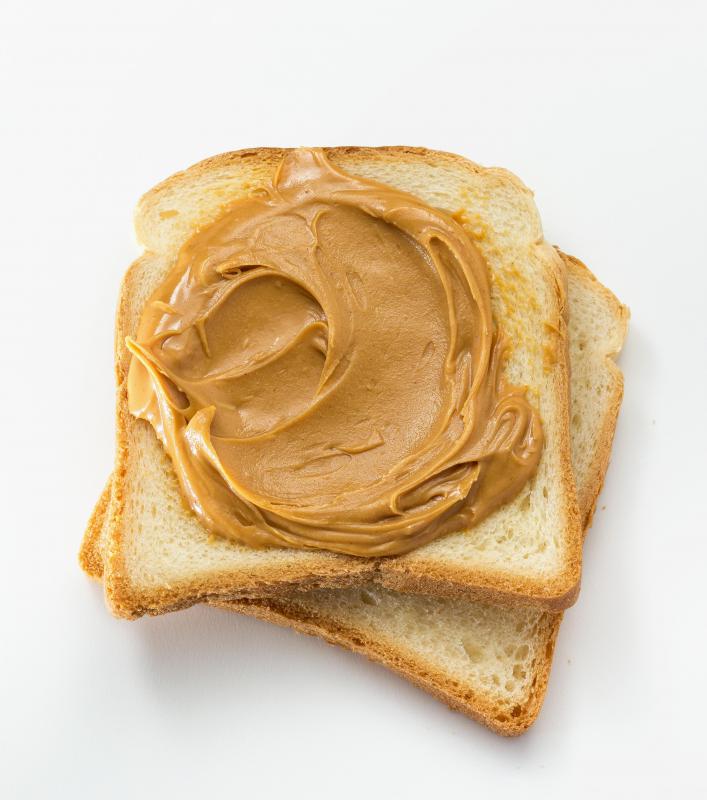At TheHealthBoard, we're committed to delivering accurate, trustworthy information. Our expert-authored content is rigorously fact-checked and sourced from credible authorities. Discover how we uphold the highest standards in providing you with reliable knowledge.
What is a Food Exchange List?
A food exchange list is a system of determining a daily food plan based on units, or exchanges, of various food types. The nutrient content of each item on the list is calculated according to its serving size, so that items in the same category have approximately the same nutritional value. One serving size of a food in a category can be exchanged for one serving size of any other food in the same category, which is why a serving is called an exchange.
One of the first and most widely adopted exchange systems is the diabetic food exchange list, but the method is used in a number of popular diet plans. The United States Department of Agriculture's Food Guide Pyramid (now MyPyramid) is an exchange system. Many countries in the European Union also recommend exchange-based food pyramids. Exchange systems can be adjusted for different calorie levels, usually between 1200 and 2000 calories, so they are easily adapted to different diets.

In a typical diabetic exchange list, the categories include meat and meat substitutes, starches, fruits, vegetables, dairy, and fat. Other diets might have different category names, and might include different items, such as a category for foods that should be eaten sparingly or infrequently. Some foods might fall into more than one category, or be in a different category in one food exchange list than they are in another. For example, beans are protein or meat exchanges in some programs, but are in a separate category for beans and legumes in other programs. Cheese is classified as a meat substitute in the diabetic food exchange list, but as a dairy exchange in other plans.

Meat exchanges could be meat, poultry, or fish, usually in portion sizes of one ounce. They could also include non-meat sources of protein, such as beans or peanut butter. In the diabetic exchange system, meat is further broken down by the amount of fat it has, with higher-fat sources eaten less frequently.
Carbohydrate or starch exchanges usually include grains, breads, cereals, and starchy vegetables like potatoes. On some exchange lists, carbohydrates might be broken up into more than one category. Grains, cereal, and pasta are often combined in one exchange category, which may or may not include bread.

The serving size for a vegetable exchange is usually about 0.5 cup (125 ml) for cooked or 1 cup (250 ml) for raw vegetables. Fruit exchanges are often smaller than what most people in the United States think of as a serving size: half a medium banana, for example, is one serving. Most plans call for a generous number of fruit and vegetable exchanges, since they tend to be low in calories.

Exchange systems are flexible and easy to follow for most people. The key to following an exchange system is to observe portion sizes, and not go over the recommended number of exchanges. Anyone can follow an exchange system, but diabetics should consult with a dietician, preferably one who specializes in diabetes, to find the best food exchange list for their needs.
AS FEATURED ON:
AS FEATURED ON:
















Discussion Comments
@Kamchatka - I think what ellaesans is trying to say is that Weight Watchers would be less likely to participate in a food exchange program because they have pre-packaged food products and pre-packaged meals. Jenny Craig will normally let you make the choices based off a points system which is much closer to a real food exchange. There are also diabetes approved food exchange lists in some cases.
@Kamchatka - I have never been a member of either Jenny Craig nor Weight Watchers, so I could not tell you for certain. I would naturally assume that Jenny Craig is more of a participant rather than Weight Watchers because Weight Watchers has it's own "line" of food.
For example, your carbohydrate exchange list would allow you to exchange one carb for another rather than using Weight Watcher's predetermined meals where all the nutrients and vitamins are already predetermined and included. Does that make enough sense?
So would I be correct in assuming that weight loss programs such as Jenny Craig and weight watchers would participate in a exchange or diet food list? Does that make sense?
Post your comments